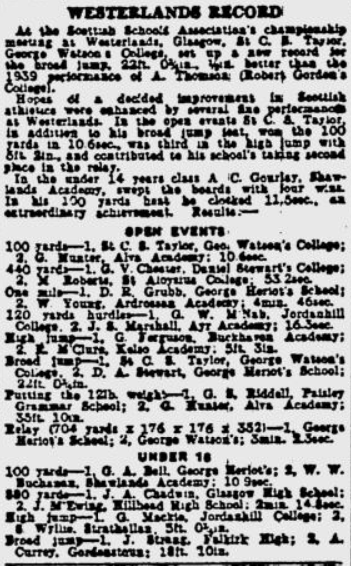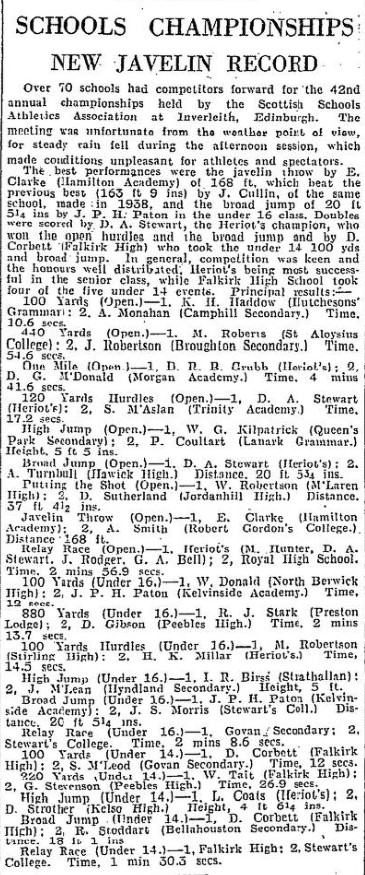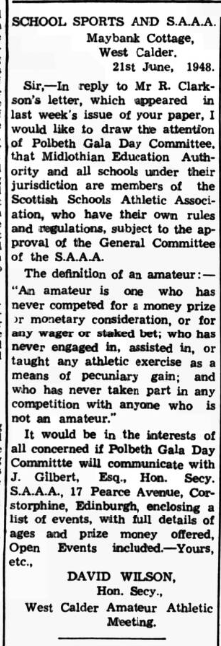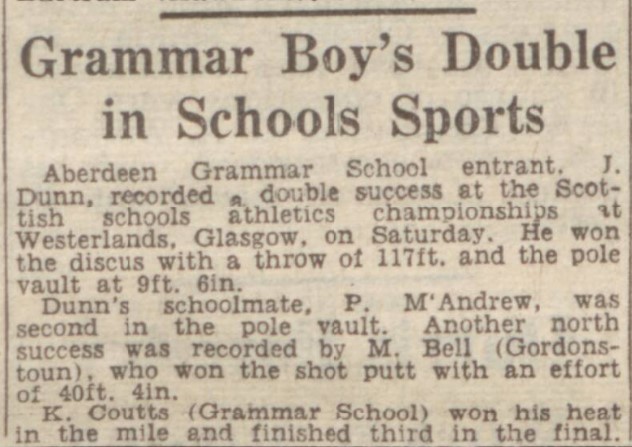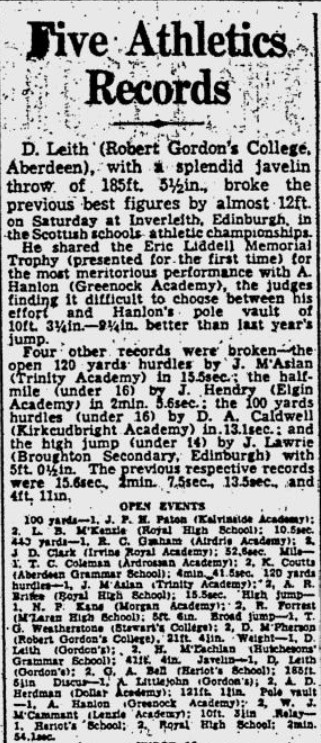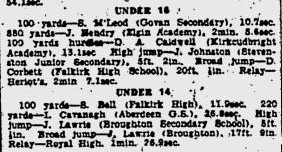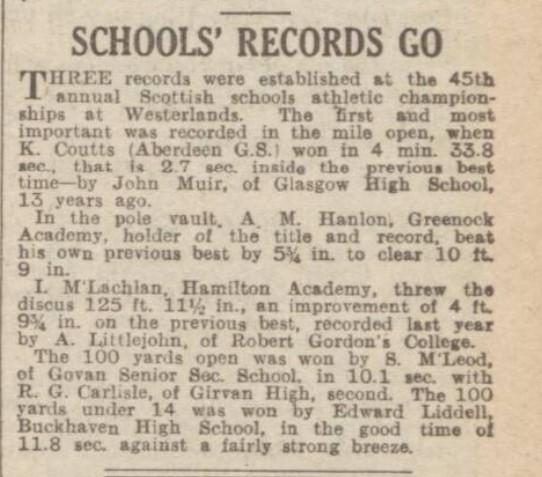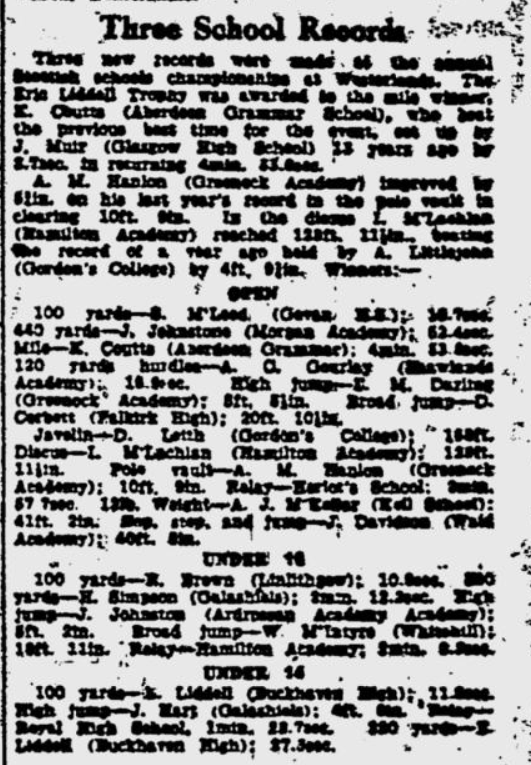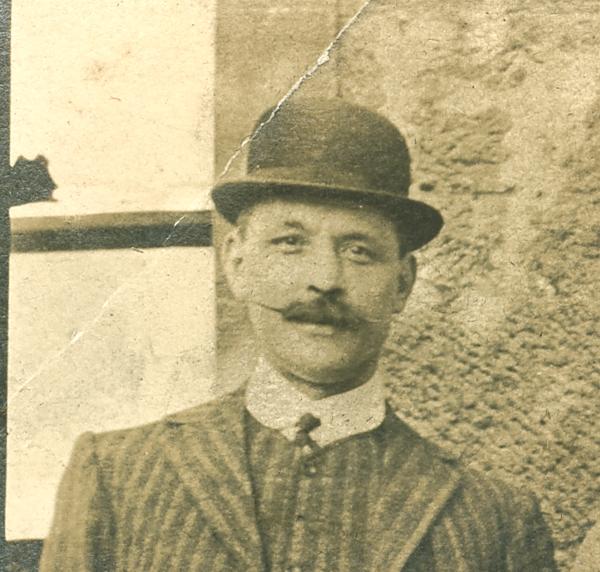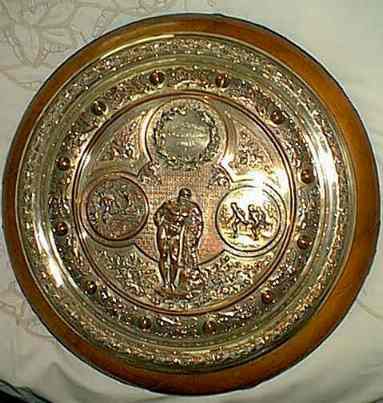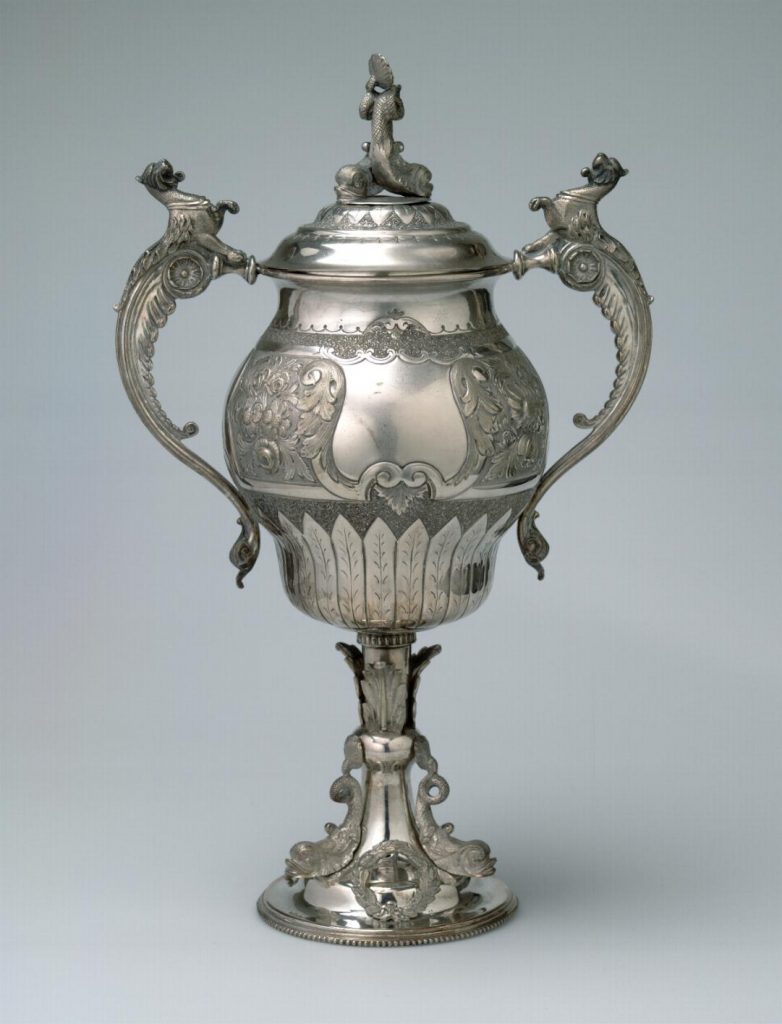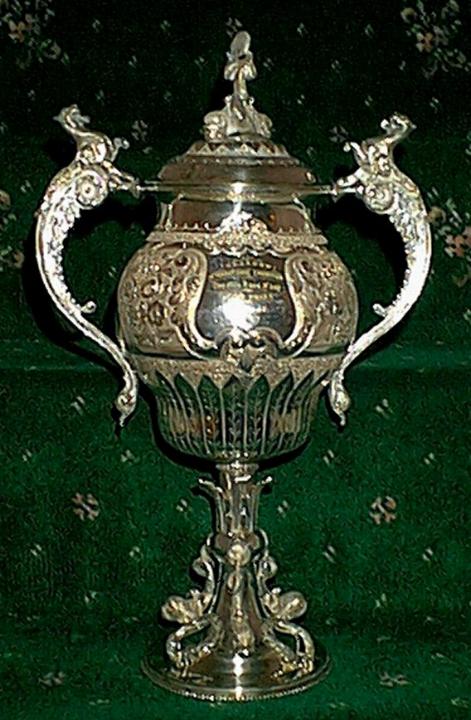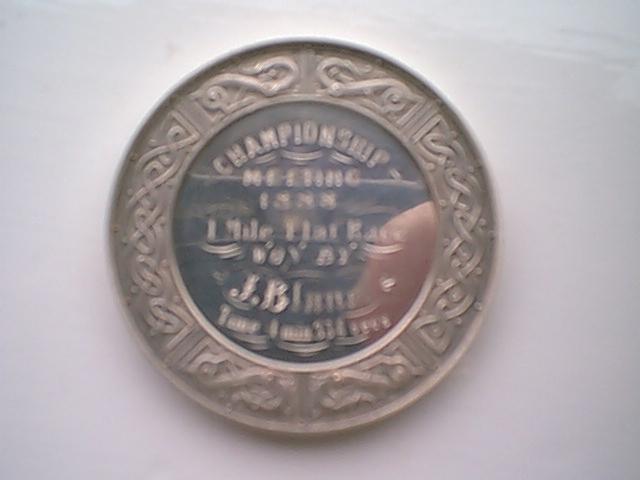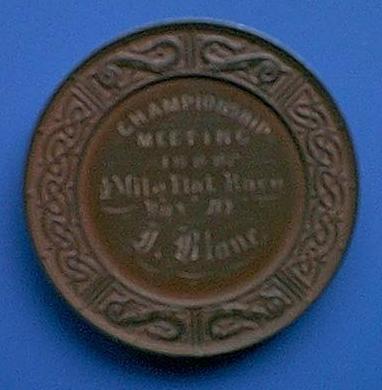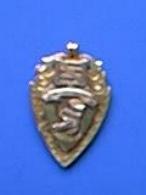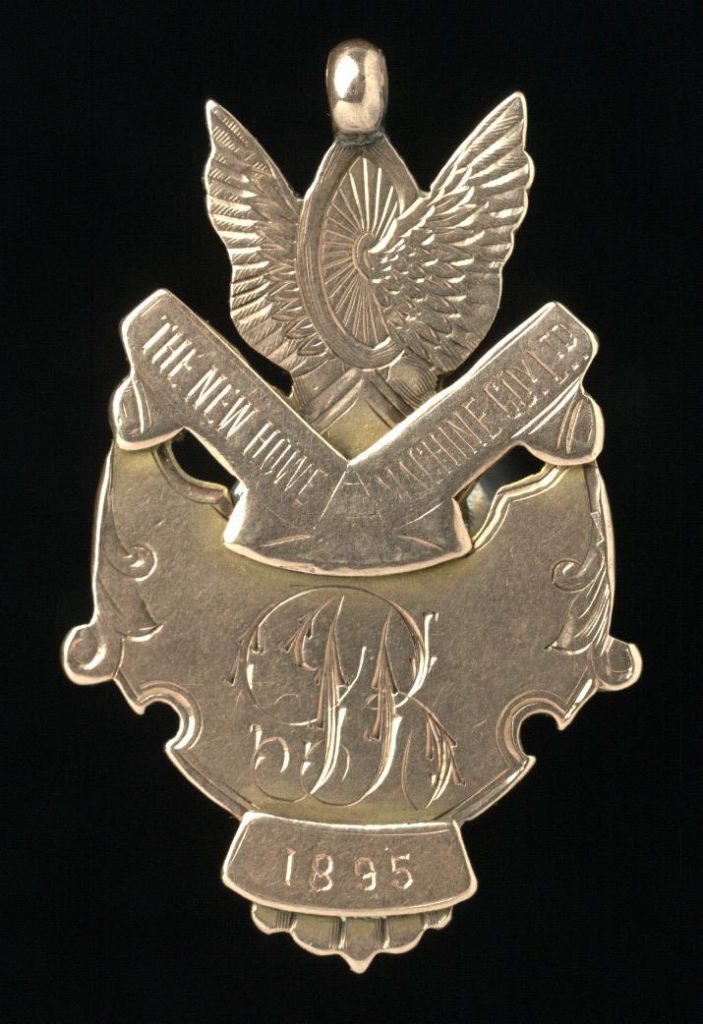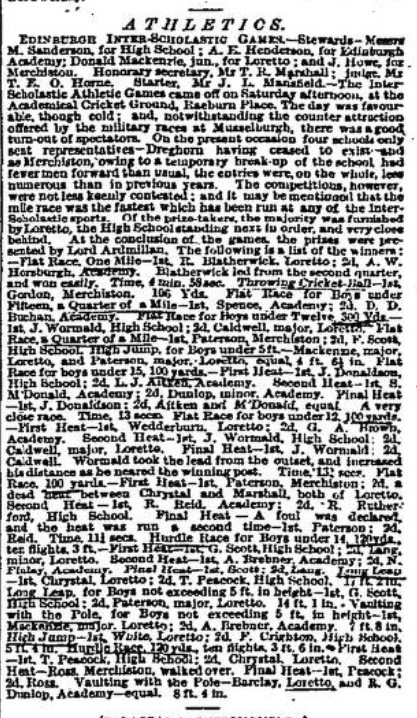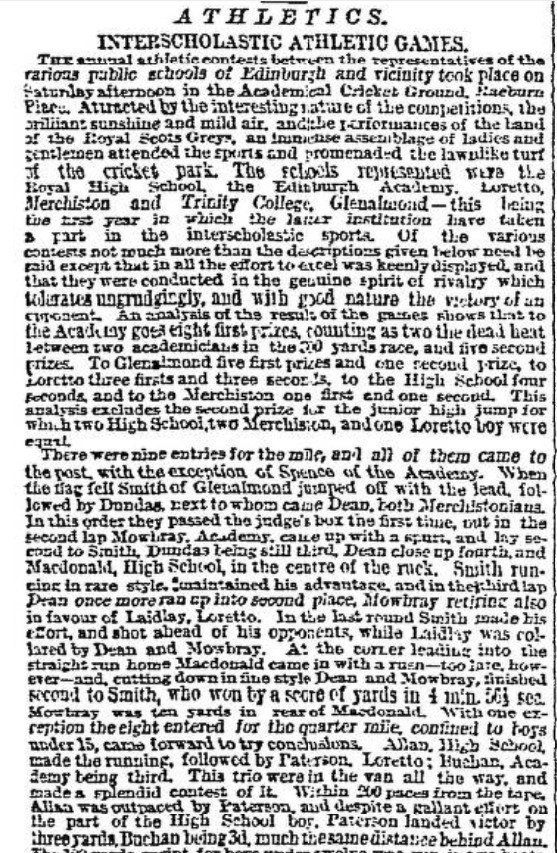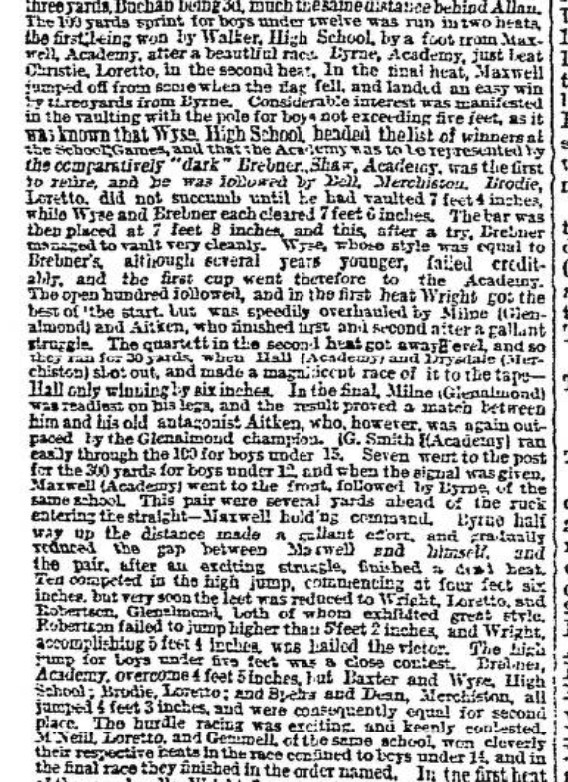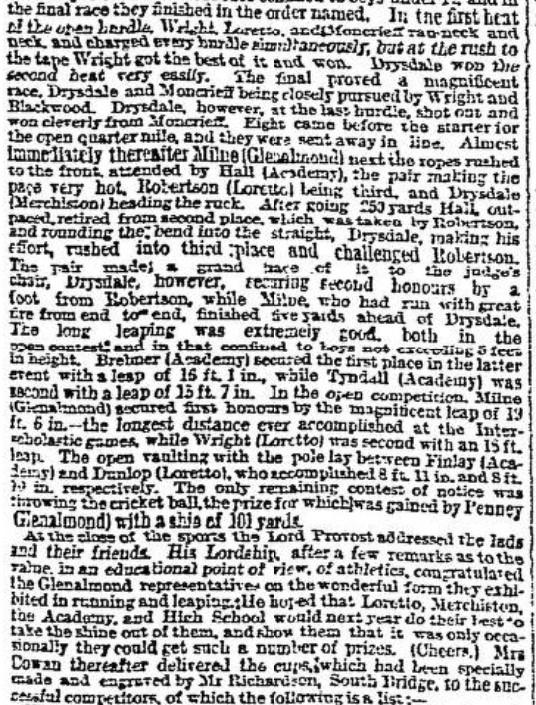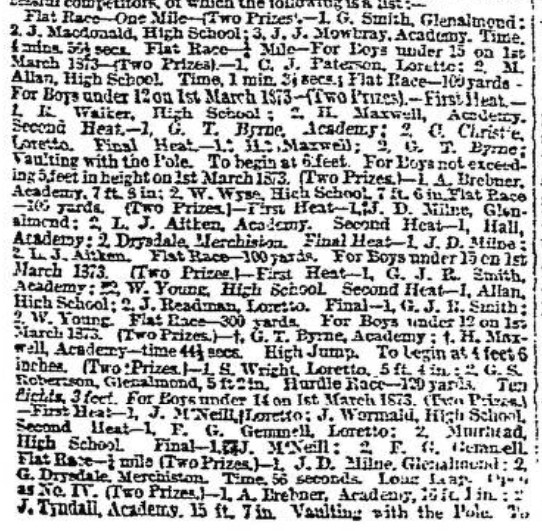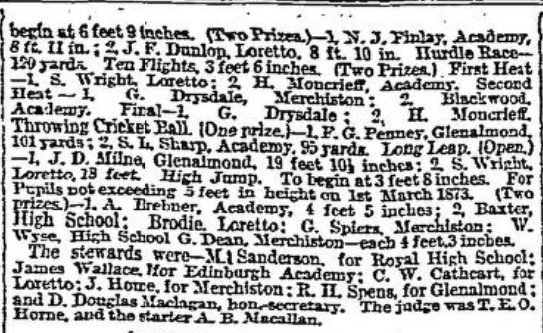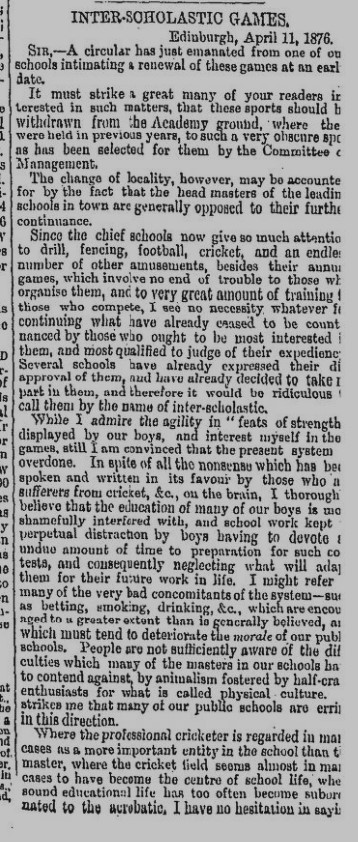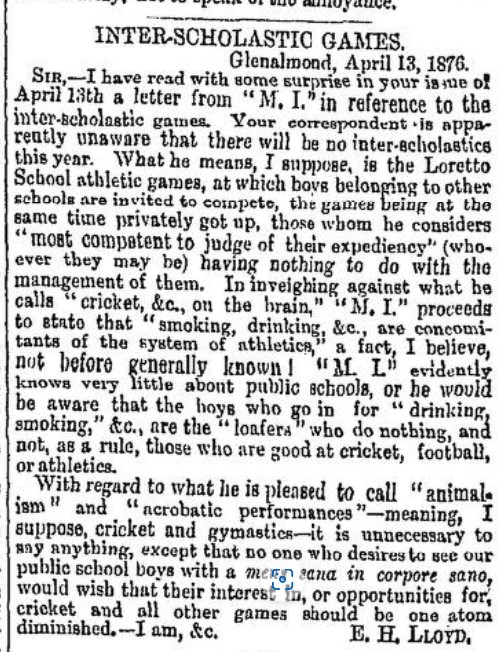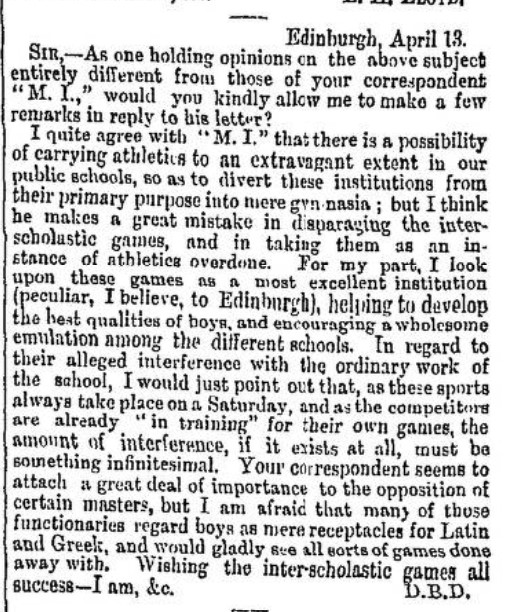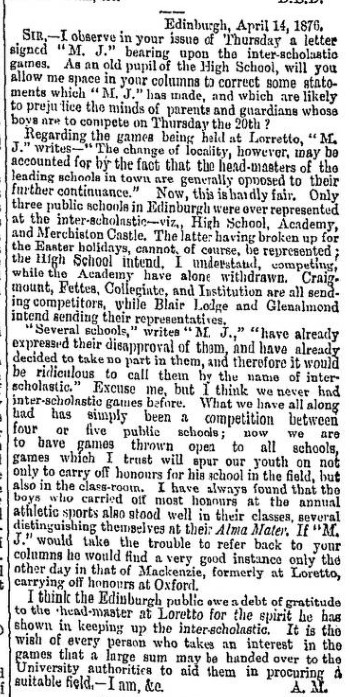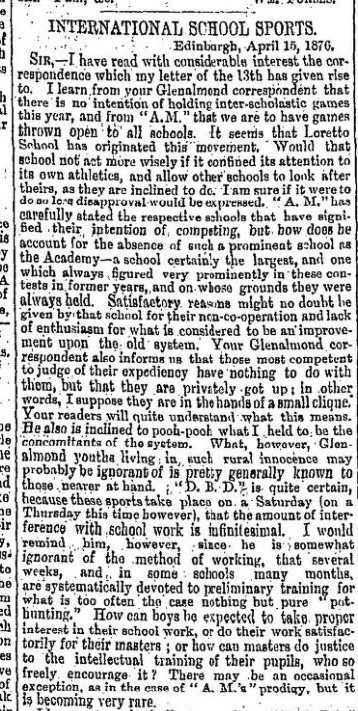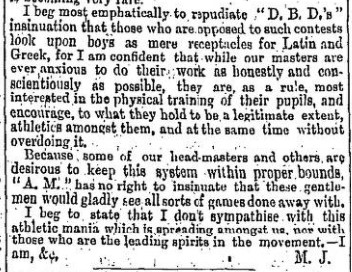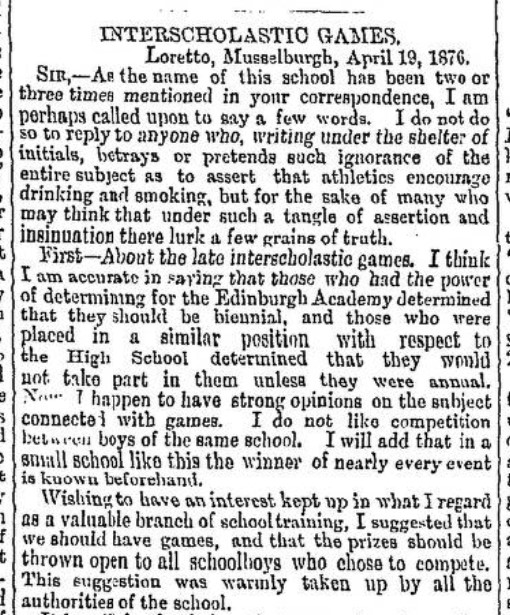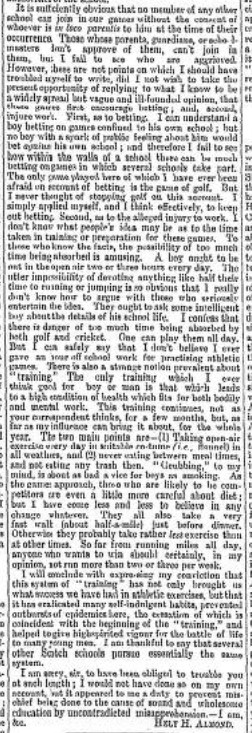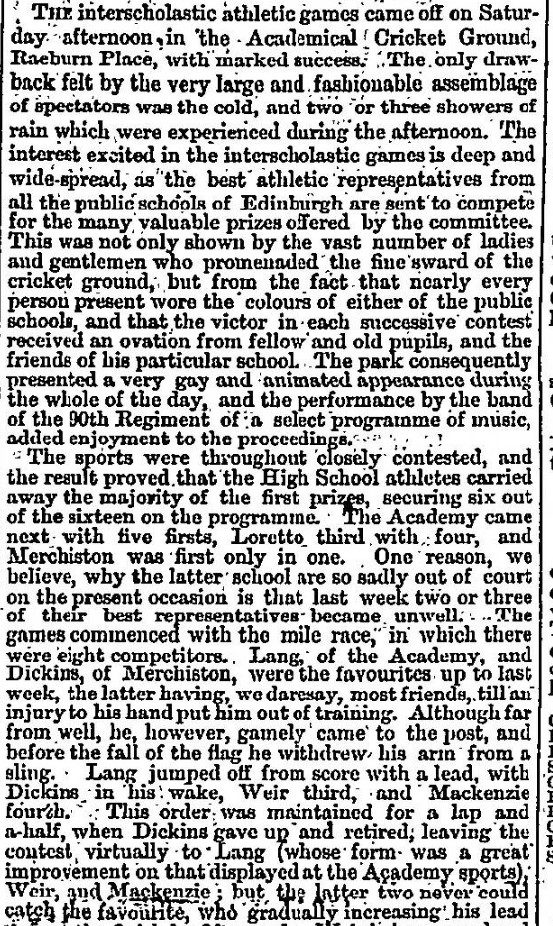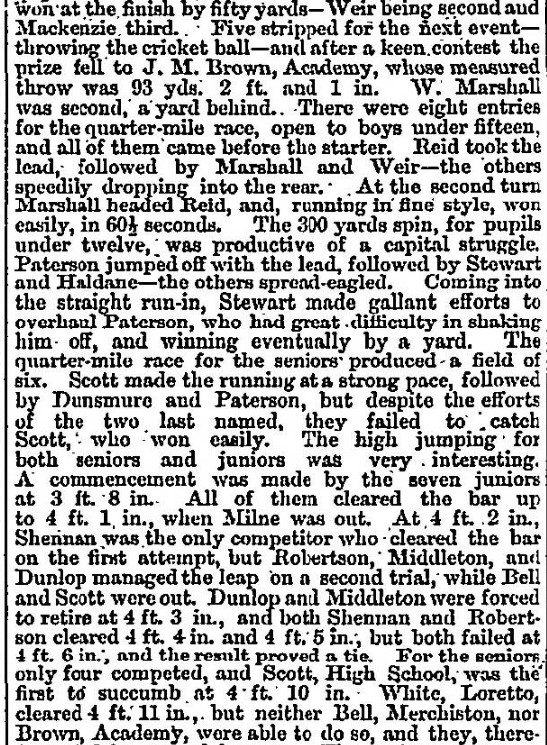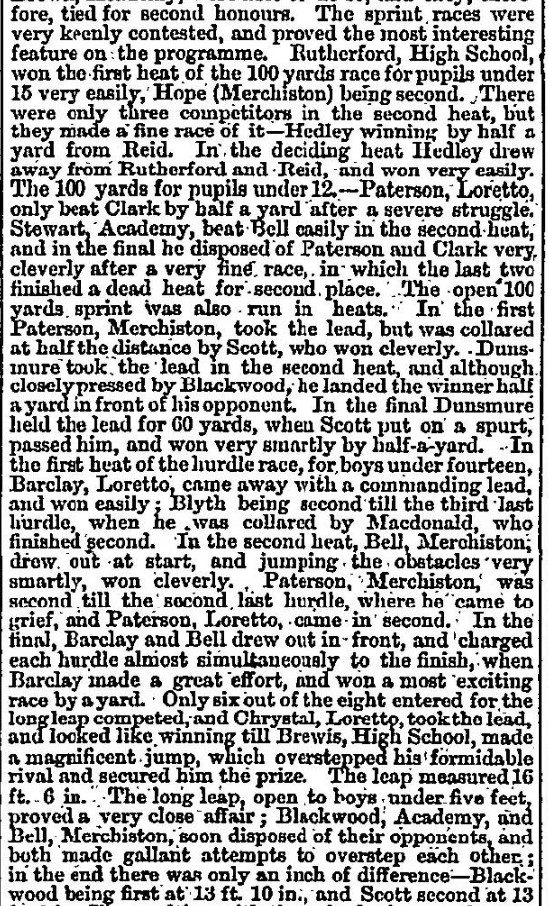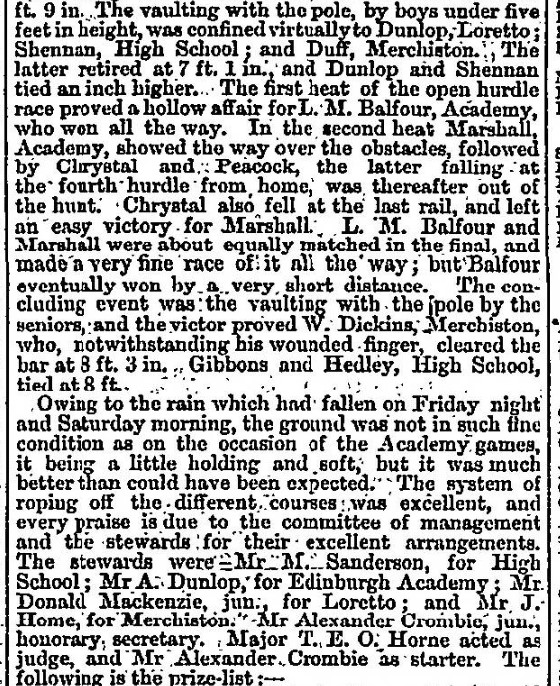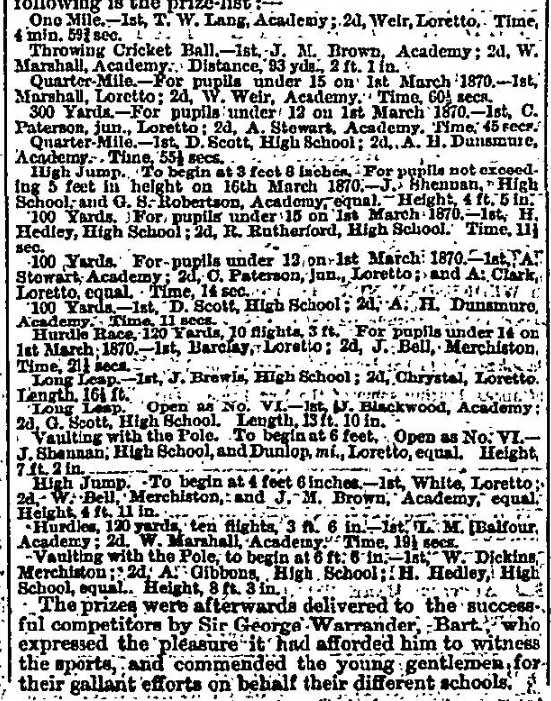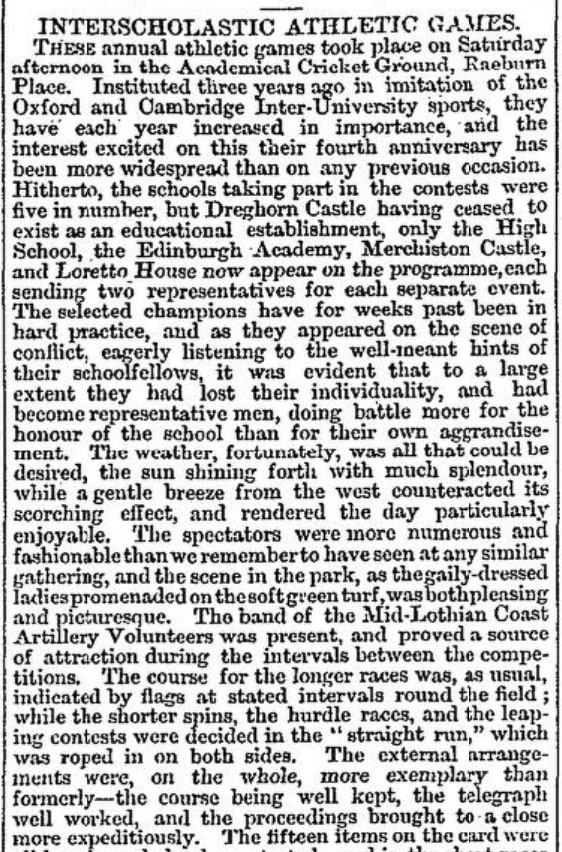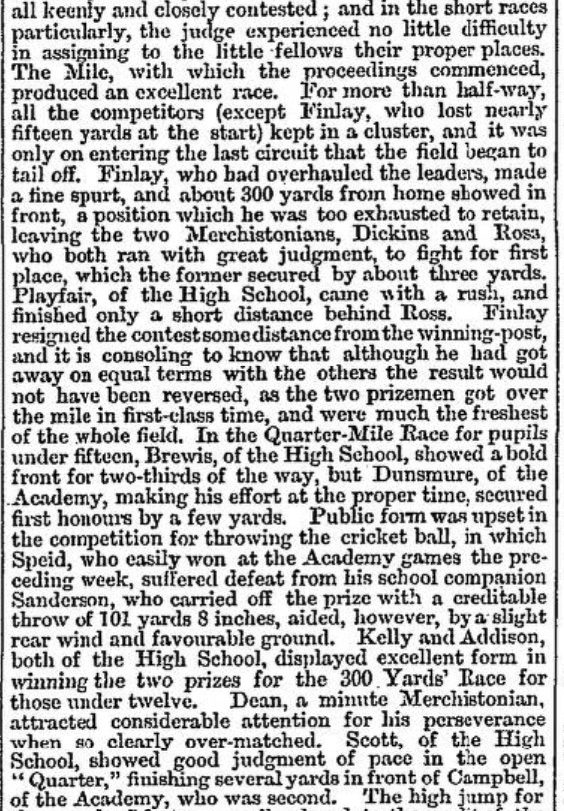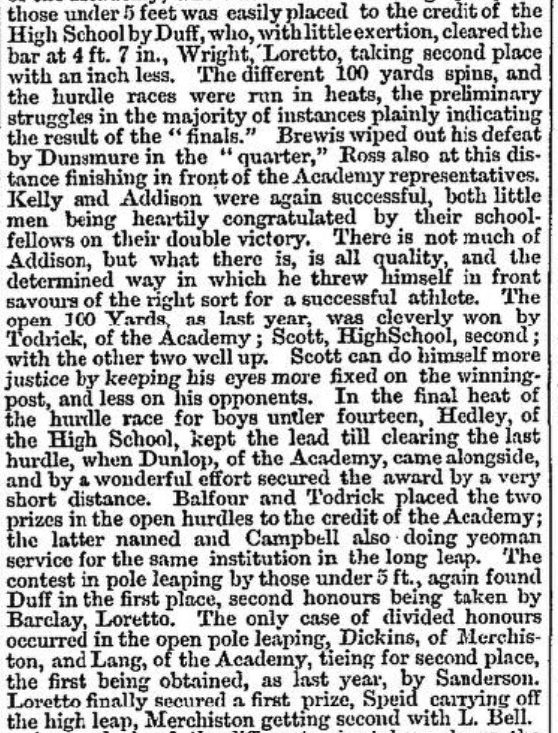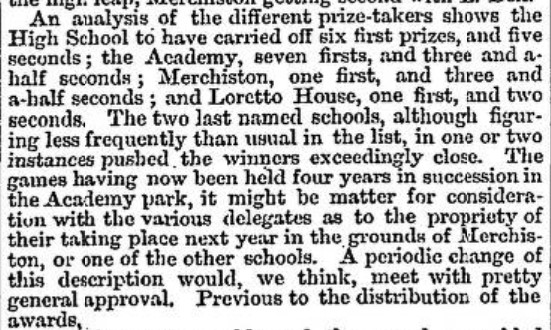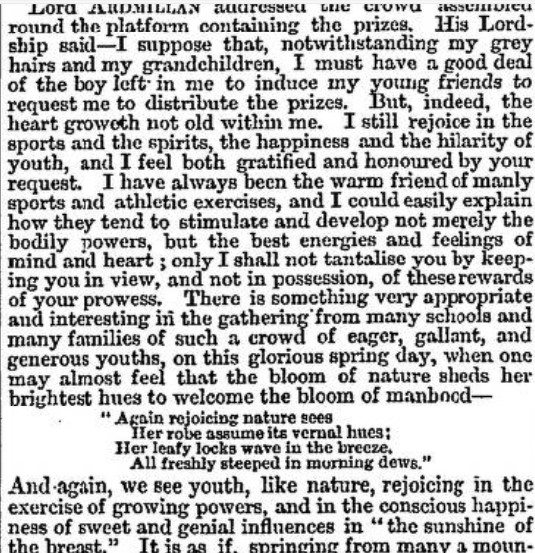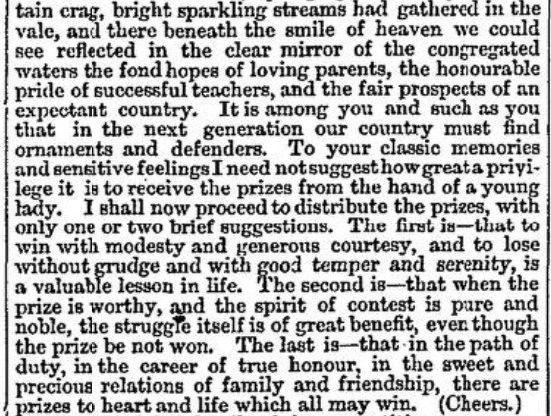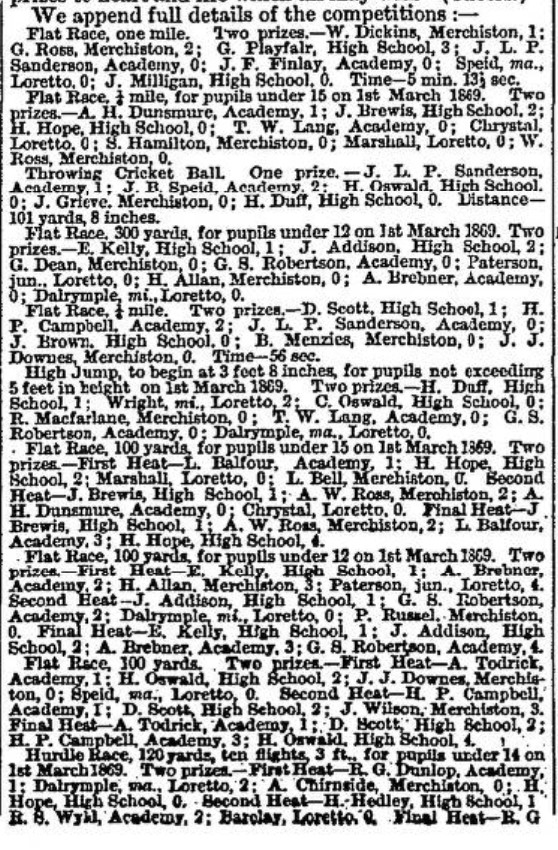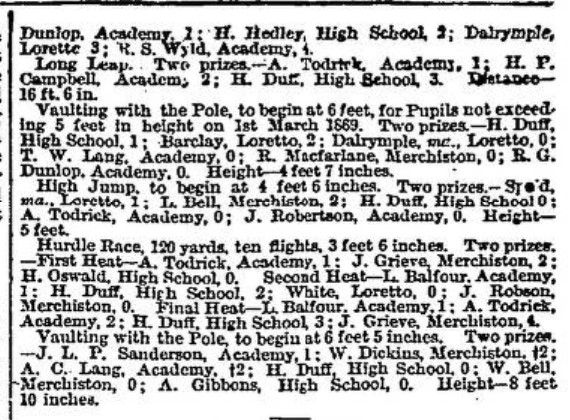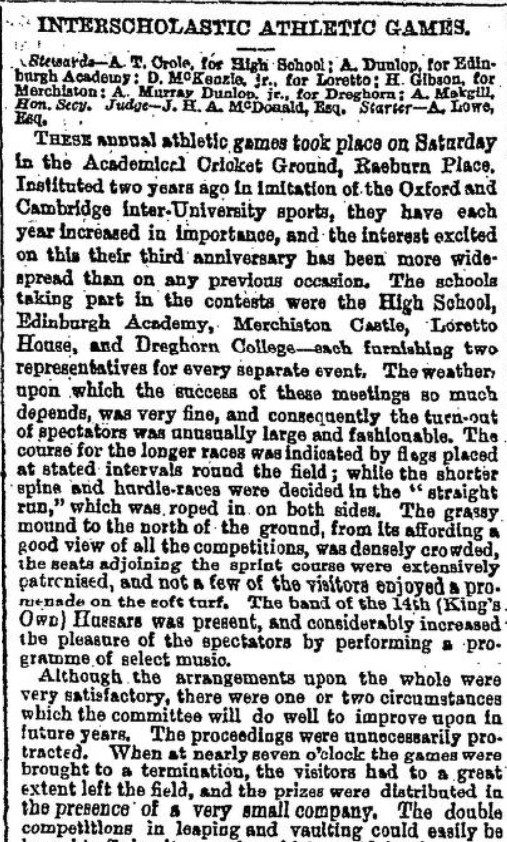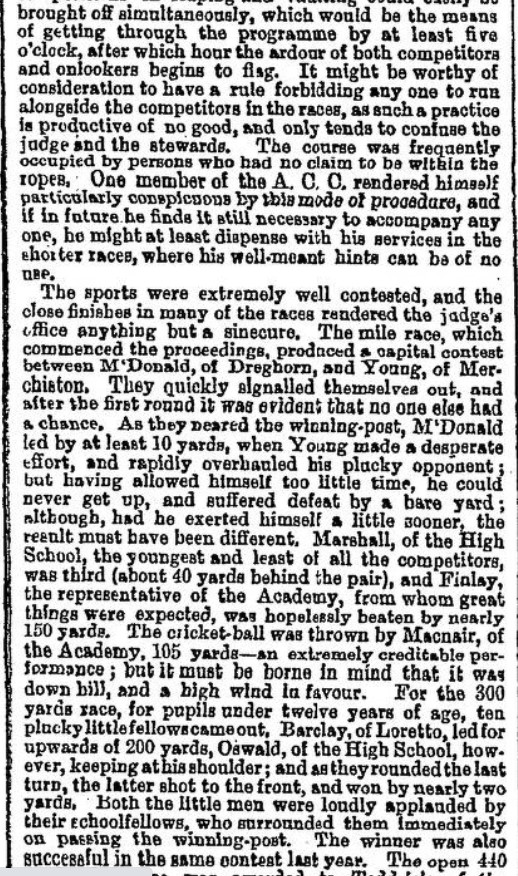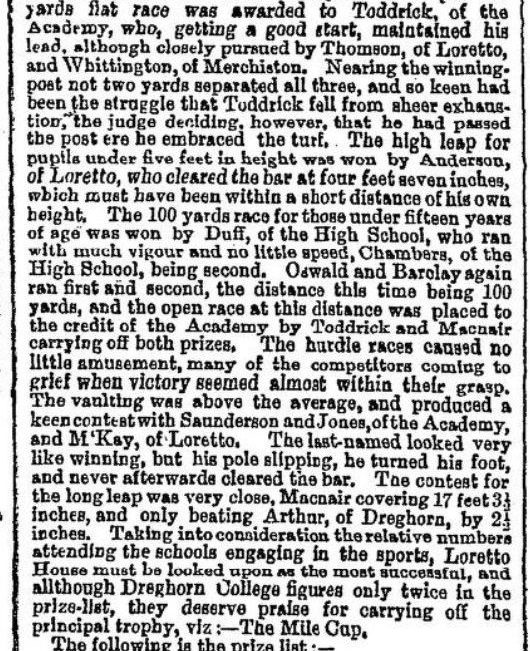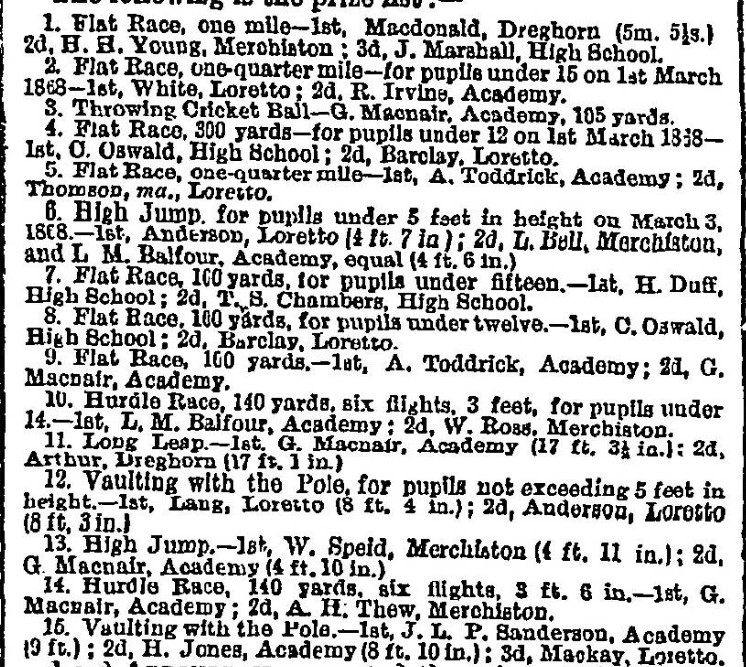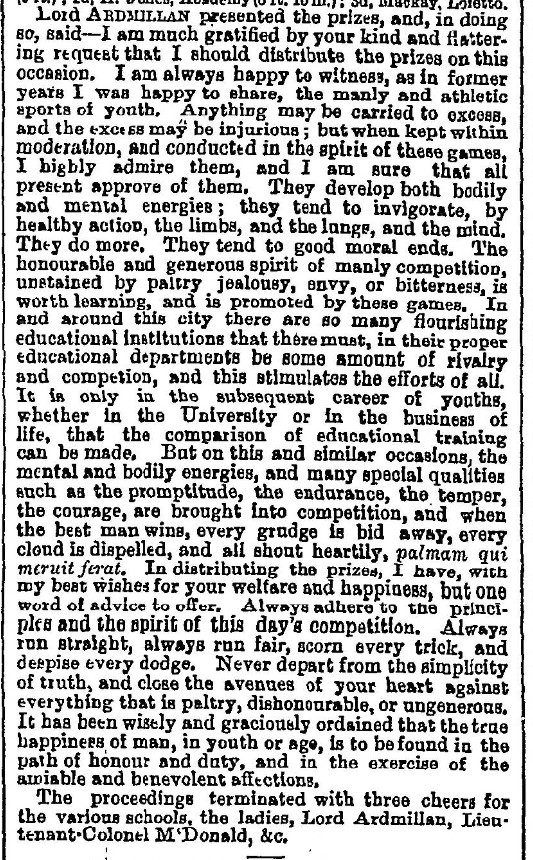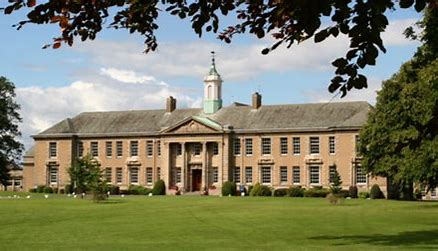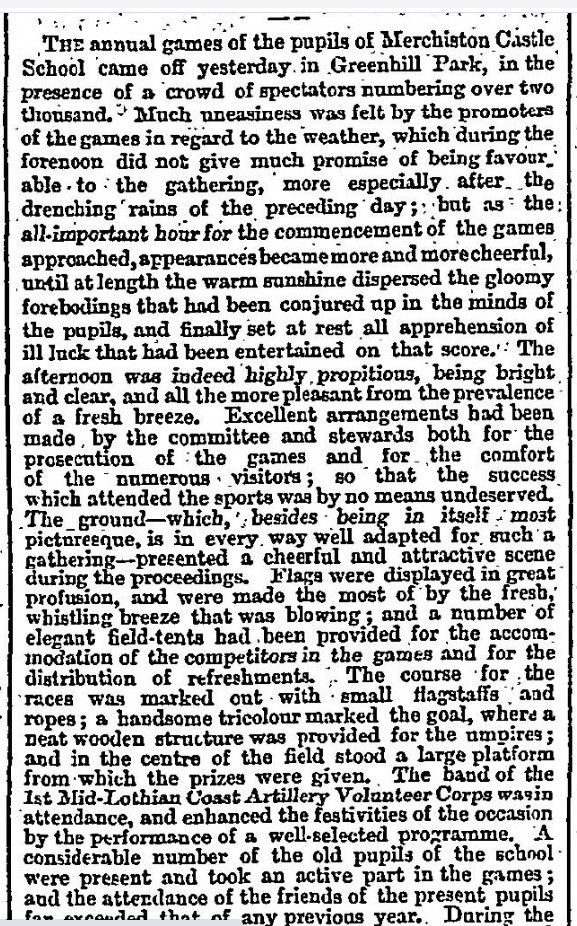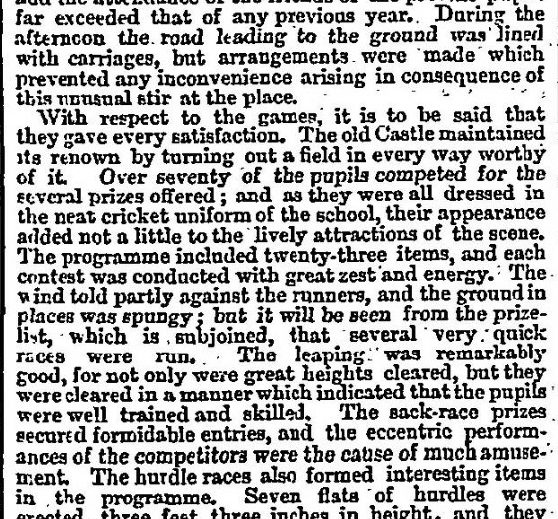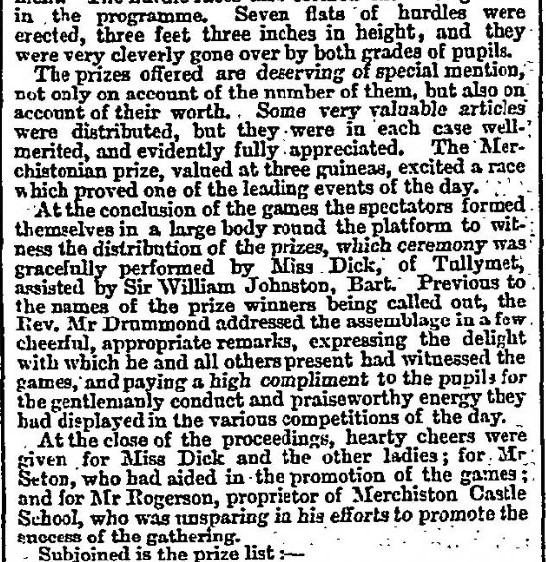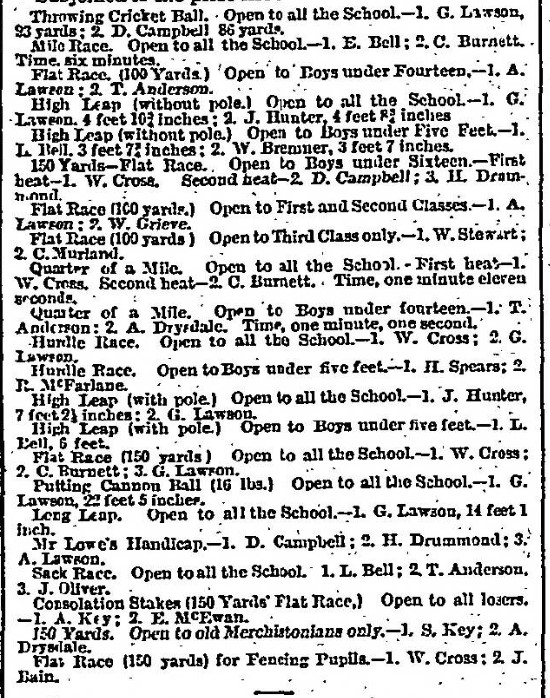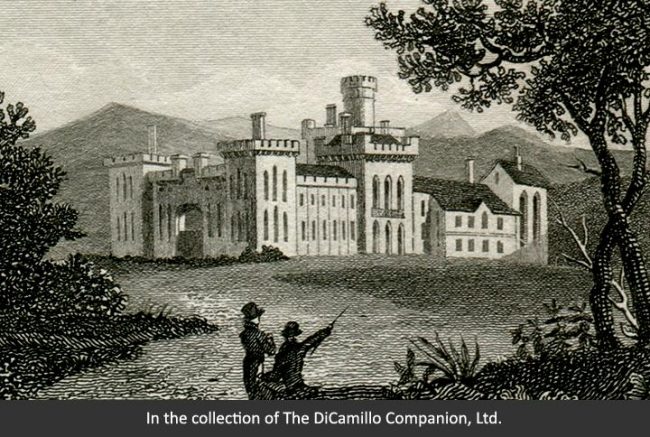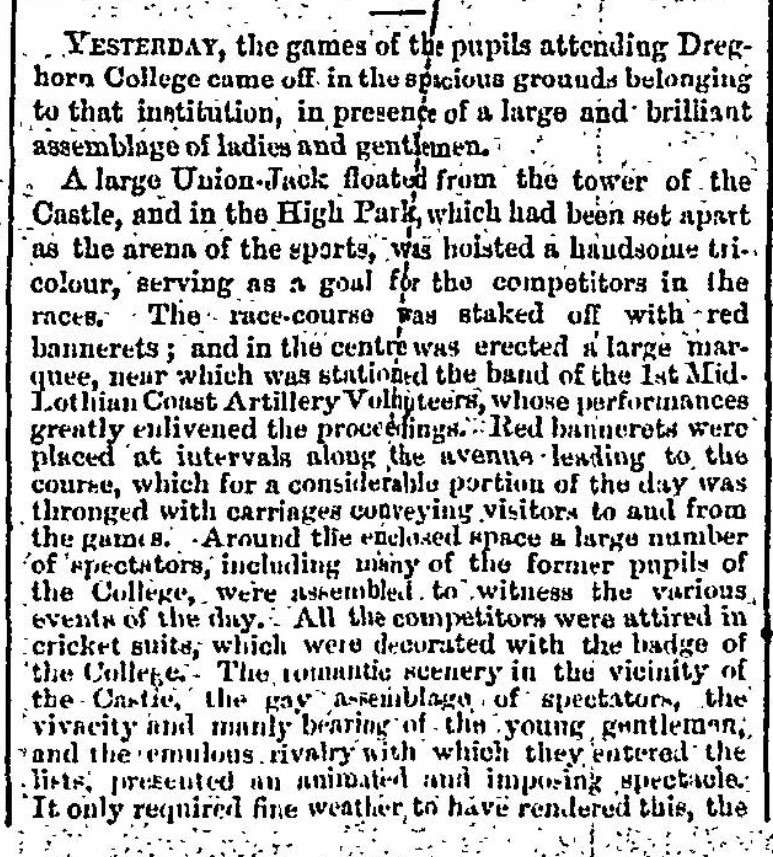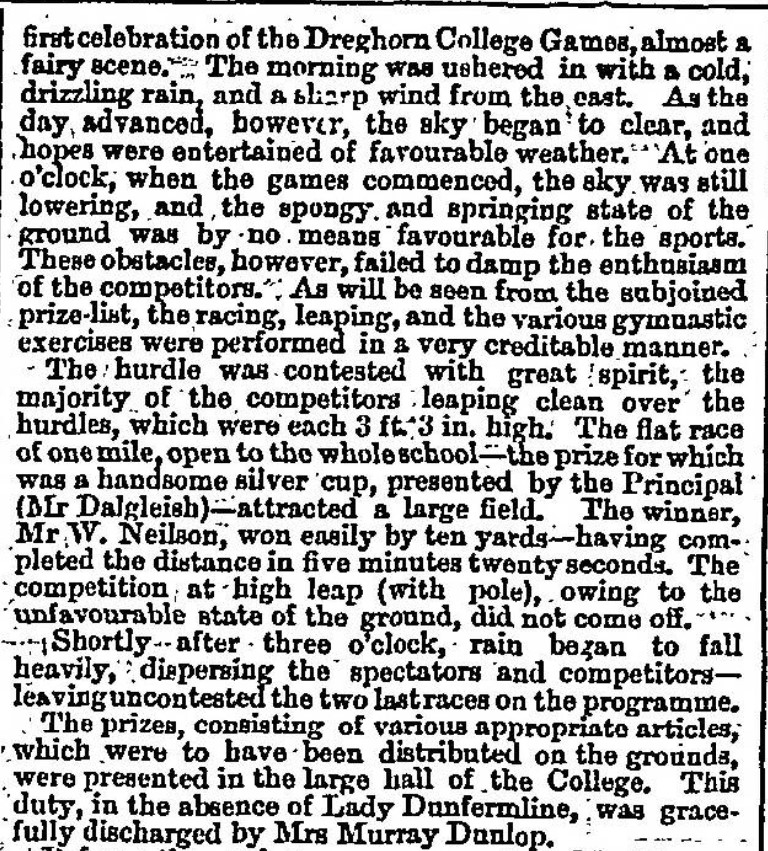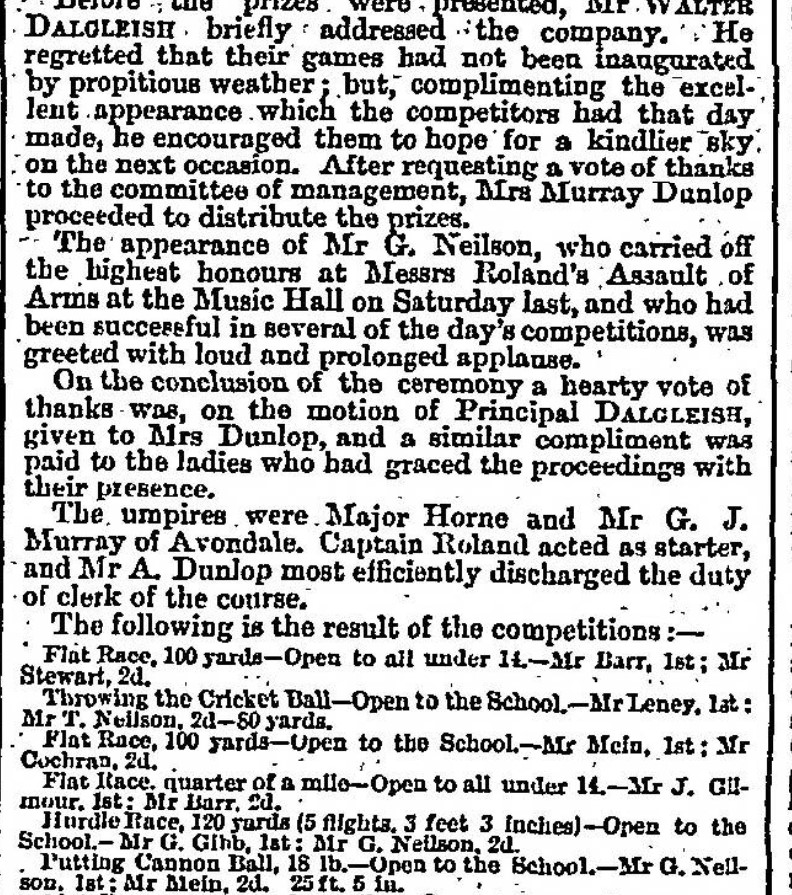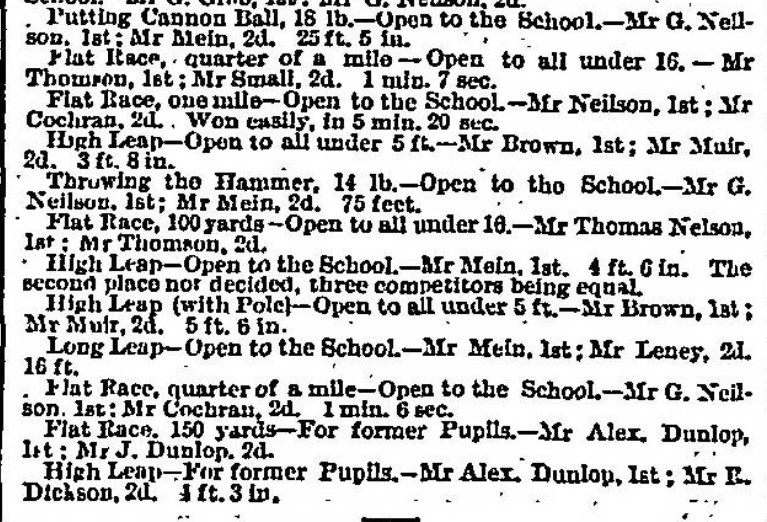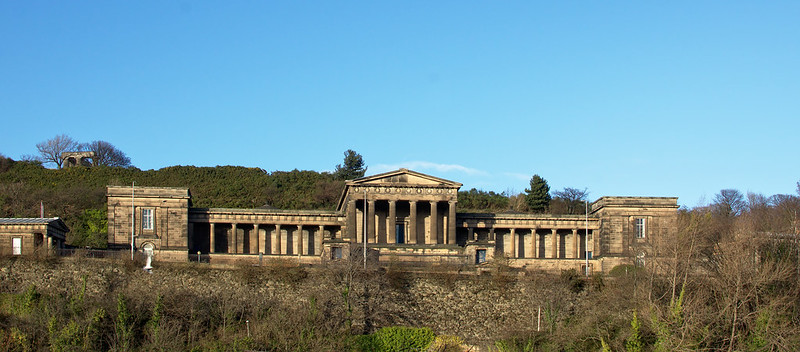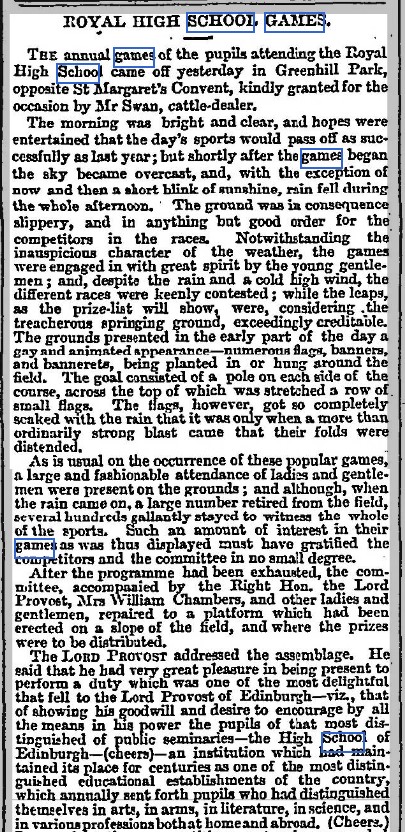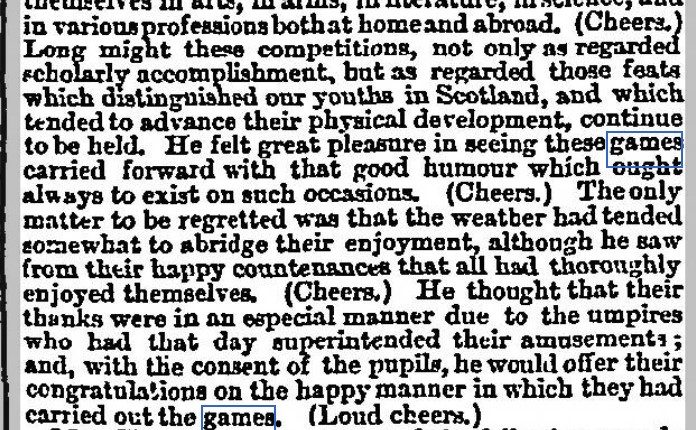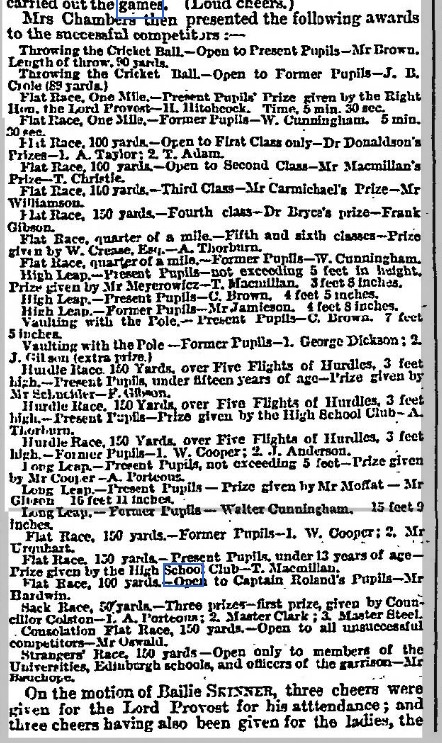The Schools Championship began again quickly after the war with a meeting at Westerlands in Glasgow, on Saturday, 12th June starting at 11:00 in the forenoon and, after a break for lunch, at 2:15 in the afternoon. The report with results was published in the ‘Glasgow Herald’ on the following Monday.
There was a broad range of schools represented in the results. Alva Academy, Ardrossan Academy, Ayr Academy, Buckhaven Academy, Daniel Stewart’s, Falkirk High School, George Heriot’s, George Watson’s, Glasgow High School, Gordonstoun, Hillhead High School, Jordanhill College, Kelso Academy, Paisley Grammar School, Shawlands Academy, St Aloysius, Strathallan were all there and winning medals. If there was any doubt after the first world war about the top fee paying schools not taking part, Stewart’s, Heriot’s, Watson’s, Glasgow High and Gordonstoun removed any doubt this time round.
The championships moved to Edinburgh, to Inverleith, for the meeting on 14th June 1947. The ‘Scotsman’ report has counted the competing schools and tells us that there were 70 taking part. The report and results were published in the 16th June issue.
More new names on the medallists roster after last year – Bellahouston Secondary, Broughton Secondary, Govan Secondary, Hawick High, Hamilton Academy, Kelvinside Academy, Lanark Grammar, Morgan Academy, North Berwick High, Stirling High, Trinity Academy, Peebles High, Preston Lodge and Queen’s Park Secondary. Note too the reference to the Scottish Schools Athletic Association – a different association to the original ruling clique from the fee-paying schools in Edinburgh.
They were back in Glasgow at Westerlands on 26th June in 1948. Unfortunately there was no report to be found in the ‘Glasgow Herald’ or in ‘The Scotsman’. There was however an interesting letter in ‘The Midlothian Advertiser –
As a definition of amateurism it is faultless (!) but the perennial argument about whether they should apply to school children in the local sports gala day is highlighted. No national coverage, but there was local reporting such as the following from the ‘Press & Journal’ in Aberdeen on 28th June which pointed up the local interest.
There are other short local reports for Madras College or from Motherwell but no complete report was found.
In 1949 the ‘Glasgow Herald’ reported on 20th June on the championships, held at Inverleith again.
There were new schools on the prize list this year, names such as Irvine Royal Academy, Kirkcudbright Academy and Stevenston Junior Secondary, the latter being the first time after the War that a Junior Secondary, whose name proclaimed it, was on the awards list. Govan Secondary might well have been another state junior secondary and although the high schools were never slow to give their full designation – which could cover the fee-paying as well as the state and granted some ambiguity to the interpretation – the same was not quite true of the junior secondary.
Back at Westerlands on 17th June in 1950, the ‘Sunday Post’ had this short report with minimal results printed on the following day.
There was a bigger report with results for all three age groups in the ‘Glasgow Herald’ of 19th June and it is reported below.
